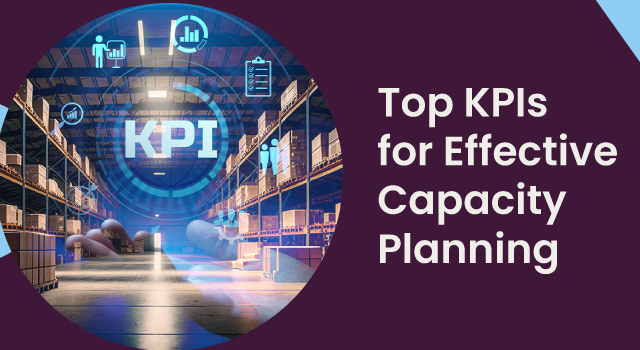Small-to-medium size businesses that place their customers at the center of their supply chain planning increase their competitive edge.
For many businesses, the pressure of ongoing supply chain disruptions can be overwhelming to deal with and plan around. With over 70 ships unable to dock in Los Angeles and California, there is no flow of goods for many businesses, and this will result in demand not being met on time, and ultimately these delays will impact sales.
What keeps the Netstock team awake at night is knowing that for many businesses, the recent supply chain disruptions will have lasting effects not only right now but for the foreseeable future.
So what does this mean for small-to-medium size businesses(SMEs)? How can they weather this ongoing supply chain storm?
For small to medium enterprises to actively compete against large enterprises today, they need to set themselves up for success by offering unwavering exceptional customer service – Tony Sinton, Founder and Executive Director, Netstock.
The SME landscape: In the US, there are about 30 million SMEs, according to the SBA Office of Advocacy report in 2019, which amounts to over 90% of businesses. During the recent pandemic, almost 100,000 US businesses have permanently shut, according to Yelp.com’s Local Economic Impact Report.
The reality is large enterprises are not going anywhere. They are increasing their dominance and partnering with other entities to help improve their reach in other countries while at the same time capitalizing on the customer’s need for instant gratification, such as holding a wide range of products and offering same-day deliveries.
Here are a couple of recent examples:
- Home Depot has entered into a partnership with Walmart and has hired Walmarts GoLocal delivery service to offer Home Depot customers direct deliveries/ same-day deliveries.
- Amazon signed an agreement with the British Post Office to trail a ‘click and collect’ offering for UK customers.
- French supermarket group Casino has partnered with Amazon through their subsidiary. You can purchase Amazon products in France, and still get same-day delivery as promised by Amazon in the US.
Let’s face it, many of us have become accustomed to the easeful nature of online shopping and even more so if you can receive same-day delivery.
According to statista.com, “in 2021, over 2.14 billion people worldwide are expected to buy goods and services online, up from 1.66 billion global digital buyers in 2016′.”
With consumers having more choice of from whom, how often, and what platforms they use to purchase products, their behavior will become harder to predict, making inventory decisions more complex for demand planners and sales teams alike.
How can SMEs remain competitive, scale their business and stand-out amidst a crowd of larger enterprises?
Demand planners are often the ‘person’ in the middle of keeping the sales team happy while ensuring they work within the cash flow parameters set by finance. Demand planners also have to manage late deliveries and calls from customers asking where their stock is. In these pressurized situations, often customer service will suffer.
To set a business apart from its competitors, one needs to communicate with customers and suppliers constantly. How well you can serve your customers will help retain current customers and help instill loyalty towards your business.
What does a business need to offer exceptional service?
- An effective communication plan incorporated into your supply chain processes.
- Data to give you visibility about what’s happening in your supply chain.
Business must become service-oriented:
Offering exceptional service requires a collaborative approach! Think about The Avengers. They are a collection of superheroes who, when they work together, can do powerful things.
The demand planner, the sales and marketing teams must work together and create a communication action plan that keeps customers up to date from when they place the purchase order to when the customer has received their stock. Adding a few additional courtesy calls into the plan is also a quick and effective way to keep in touch with your customers.
1. Become your customers’ superheroes!
- Always be honest with your customer as this builds trust.
- Increase communication when their stock may arrive late or has not arrived in full or is damaged.
- Be transparent and don’t hide any of the facts from the customer. They may be annoyed with you, but the truth creates a baseline of respect for you and your customers to work from.
- Be more flexible – if a product/raw material is not available, do anything to source it for your customer [if you can].
- Don’t hide behind emails! Call your customers and talk to them human to human.
- Learn more about your customers. Having a deeper understanding of your customer’s market and future needs will help with your forecast accuracy.
- Be bold and ask for feedback. Connect with your customers regularly, with spot calls to find out if they have any feedback on how you can improve on your service levels. Customer feedback can help your business become more effective and innovative.
- The more your customers thrive, the more your business grows!
Suppliers also play a vital role in helping to maintain good communication with your customers. The more information you know about what is happening in your supplier’s supply chain, such as; if they will impose longer lead times or have any raw material shortages, the more accurate information you can relay back to your customers.
Something to remember – offering exceptional service to your customers often creates the environment where your customers refer to your business. Word of mouth is still the best form of marketing!
2. Invest in demand planning software to improve customer service levels.
Technology is your savior! Demand planners need to plan the stock required for the future and, with the unpredictable nature of demand and supply, they need the right tools to order the right amount of stock. Your business can’t afford to hold excess stock or, even worse, experience stock-outs. If you experience regular stock-outs, you will lose customers.
“Out-of-stock messages on the internet are expected to be up 172% this holiday season compared with 2020 levels, and up 360% on a two-year basis, according to new data from Adobe Analytics.” as stated in cnbc online recent post.
Demand planning software provides the necessary data so you can inform your customers about:
- The status of their current order
- Provide insights and suggestions about their future orders
Your demand planning software should allow you to:
- Have complete visibility of inventory in order to react quickly to changes.
- Measure your supplier’s performance to better understand supplier reliability.
- Understand your supplier’s lead times and be aware of their challenges.
- Accurately measure the right safety stock you need to meet demand.
Connect with Netstock and learn how smart inventory ensures your customer is the hero in your supply chain planning.




